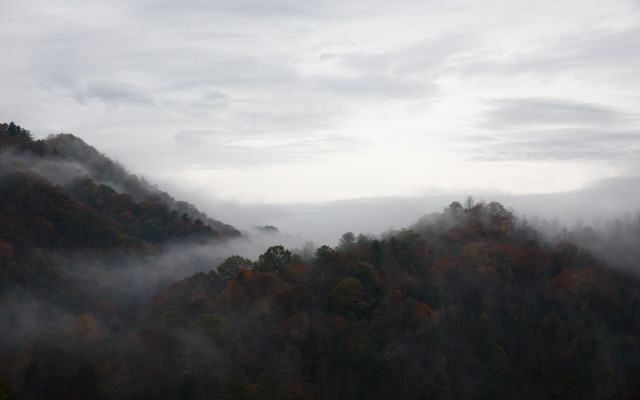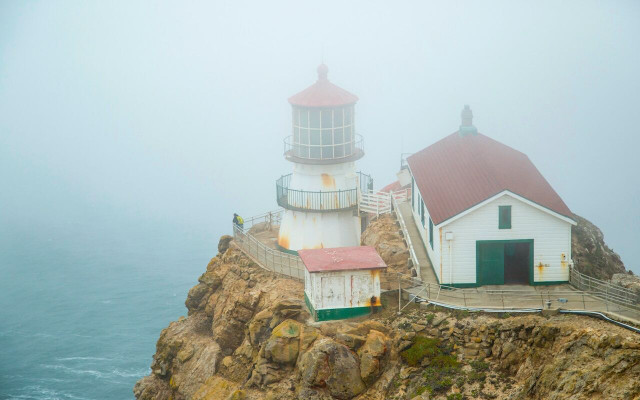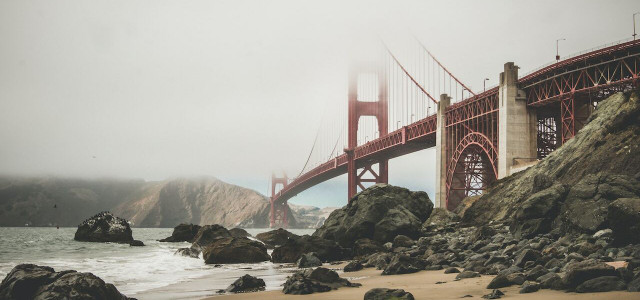Have you ever wondered what causes fog? There’s a lot more to it than meets the eye and global warming is affecting it. Why does that matter? Read on to find out.
Fog tends to make people uneasy as it creates a lack of visibility, but the reality of fog is not so scary— in fact, it plays a critical role in some of the coastal areas around the globe. While it can create a bit of travel danger when it’s thick, fog is nothing more than a low-lying cloud. What causes fog and what impact does global warming have on it? Let’s take a closer look to find out.
What Causes Fog?

Whether you like the atmosphere fog creates or find it super spooky, it’s worth knowing what causes fog:
Fog develops the same way that clouds do — when water vapor condenses — just at a much lower altitude. It forms when the cool air near the ground reaches the dew point. That said, there are many types of fog and each one has unique characteristics and different ways of forming.
Note: Some people use the terms fog, mist and haze interchangeably, but they are not the same thing. Fog is denser than mist and decreases visibility to less than 0.6 miles while mist is the term used when visibility is reduced to 0.6–1.2 miles. Haze is something different altogether as the presence of dry particulates suspended in the air decreases visibility.
Different Types of Fog



Fog is formed when water vapor condenses into tiny liquid water droplets that hang in the air, which is why fog is visible to the naked eye. When it comes to learning about what causes fog, the conditions for the various types play a huge role. While there are upwards of 10 different types, we’ll focus on the five most common:
- Advection Fog: This type of fog can occur over both water and land and happens when warm, moist air moves over and makes contact with a cooler surface. It’s common in the winter when a warm front blows in over an area with snow cover, and it’s common at sea when warmer air moves over cooler water.
- Radiation Fog: Also known as ground fog, radiation fog forms when the ground cools quickly at night and it’s most common in winter. The conditions required includes clear skies, light wind and moist air. This type of fog generally disappears shortly after sunrise.
- Valley Fog: This type of fog occurs when cold and dense air settles into the lower parts of valleys. Due to the topographic requirement, this type of fog is limited to places that have hills and valleys.
- Upslope Fog: In a process called orographic lift, this type of fog forms when winds blow air up a slope and the air cools as it rises. The water vapor in the air condenses as it cools.
- Evaporation Fog: Cold air passing over warmer water or moist land causes evaporation fog. It’s common in the fall along coastlines as the waters are still warm but the air has already started to cool.
Fog Cover in the US



There isn’t a part of the country that isn’t affected by fog, but some places experience it more than others. Areas near bodies of water like the Atlantic or Pacific Oceans, the Great Lakes, the Gulf of Mexico, or even smaller rivers, creeks, lakes and streams can be affected.
The West Coast experiences more fog than most spots in the country due to the warm waters of the Pacific Ocean. The foggiest locations in the US include:
- Point Reyes, California which experiences 200 foggy days per year.
- Cape Disappointment, Washington records 165 foggy days per year.
- San Francisco, California is iconic for fog though generally gets about 100 foggy days per year.
- Mistake Island, Maine records approximately 1,600 hours annually.
The time of year also plays into the likelihood of fog development across the country:
- In the spring, radiation fog is common throughout the interior states when nighttime skies are clear and along the Gulf of Mexico coastline.
- Summer is the least common season to experience fog, unless you are located in the mountainous regions of New England, in which case you’ll experience a combination of upslope, precipitation and radiation fog.
- In the fall, upslope fog is common in the Appalachian region while downslope is more common in the valleys.
- Winter brings heavy amounts of advection fog to the Pacific Northwest when the warm air from the Pacific meets colder land.
How Does Global Warming Affect Fog? The Example of Californian Redwoods



Believe it or not, fog is essential for flora, fauna, agriculture and even human health — particularly in coastal regions around the globe. Rising ocean and land temperatures impact precipitation patterns, resulting in less fog. This is a catastrophe in more ways than one. A prime example of the impact global warming has had on fog and the knock-on effects is the California coastline, specifically with regard to the famous Californian redwoods. Here’s what’s happening:
It’s no secret that the number of fog hours has been decreasing over the last century. California is known for its cool coast and hot interior — the ideal conditions for fog — but global warming has been throwing that out of balance. As a considerable form of precipitation, a lack of fog can contribute to drought-like conditions. Having fewer foggy days affects multiple ecosystems, but we’ll focus on the coastal redwood forests.
Recommended read: Forest Conservation: Definition & 7 Impactful Methods
Fog is often the trees’ only source of water during the hot summer months — they get nearly 40 percent of their water intake from fog alone! While redwoods aren’t necessarily dying off, if this pattern continues, we won’t see the same levels of new growth that have been seen in the past.
Rivers and streams within these forests rely on the trees to take the water vapor in, replenish their water levels and keep temperatures cool. Certain fish species, like salmon, live in these bodies of water and require cooler temperatures. When a keystone species is affected, it can affect entire food chains. As you can see, a decrease in fog creates an imbalance throughout these forest ecosystems.
What Does Science Say About the Significance of Fog?
Throughout history, villages in areas like Peru and Chile, where rainfall is scarce for most of the year, have relied heavily on fog water for their sustenance. And scientists have been working on more efficient and scalable solutions to ‘catch’ or ‘harvest’ fog for a number for years now. The idea is to squeeze water from the foggy air to be able to utilize it in otherwise dry conditions.
A researcher in this field explains to the New York Times that he once caught 37 liters in one day this way. Usually, a specifically designed kind of mesh is used alongside wood and wire to span fog catchers — to filter as much fog as possible, bigger is better. Some researchers suggest that, one day, “the foggy parts of California might be covered in fog farms, not unlike the solar farms found in sunnier spots”.
So while research is active on how to best utilize the fog that we do see in certain areas, not much is truly understood in terms of how the climate catastrophe is going to affect it (and the other way around?) globally.
Researching fog is hard, and not many people are doing it right now. Research on its significance spans over fields like oceanography, meteorology, geography, chemistry and others — which makes it even harder to understand fully. Scientists, for example those cited by the New York Times, find apparently contradicting evidence about whether fog is consistently decreasing, its fluctuation is increasing and not many of them dare to make conclusive statements about the trends.
Read more:
- What Causes Floods & How Does Climate Change Contribute?
- How to Harvest Rain Water: Tips for Beginners
- 13 Exciting Careers in Environmental Science
Do you like this post?








